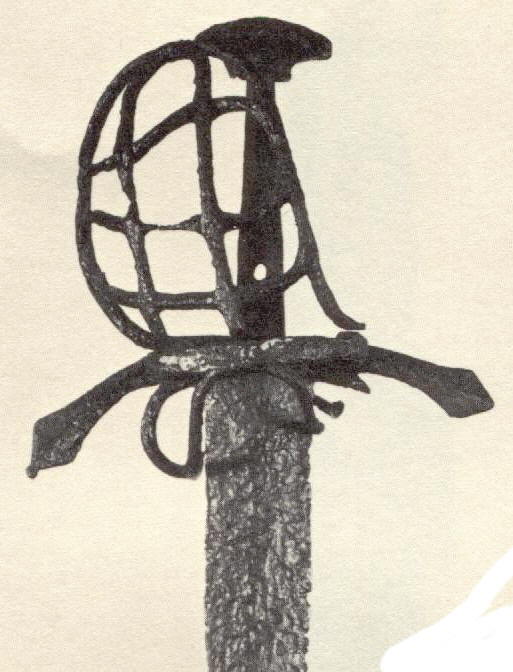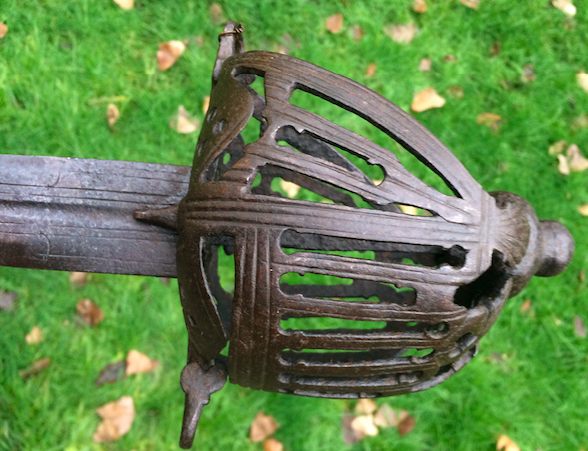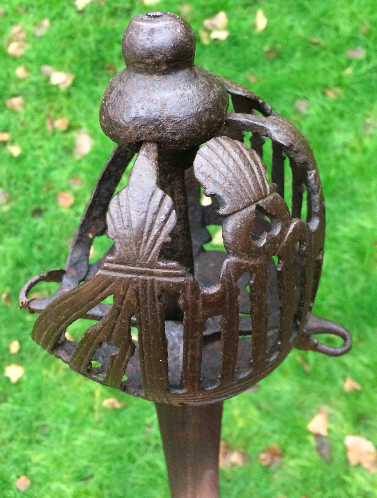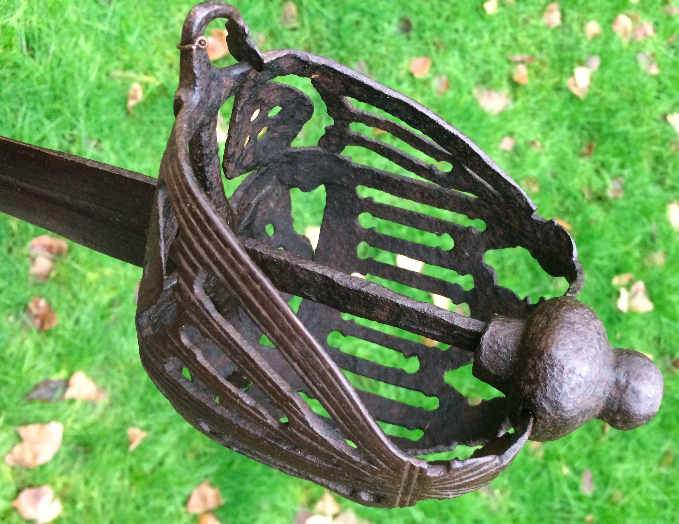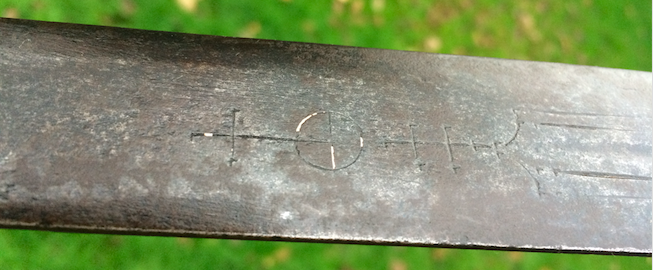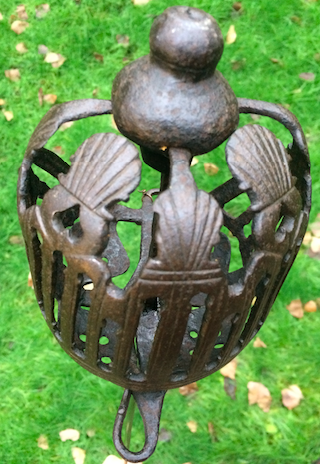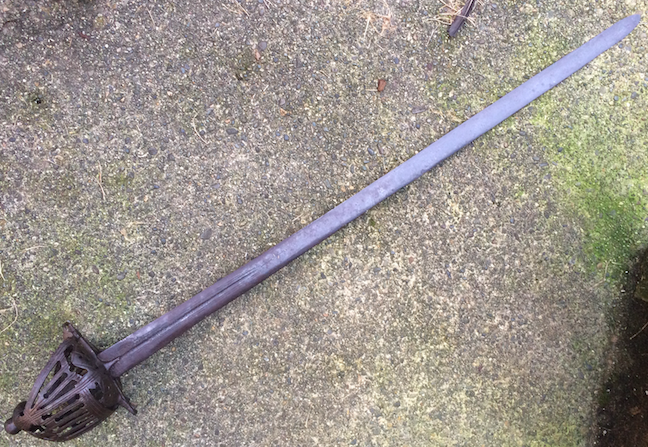Yup, lots of speculation ..... I surely would have thought the English would have kept better records of these things ?
Ah well, perhaps something will come to light oneday that gives us the positive proof, oneway or the other !
Meanwhile I'll just put on my Scottish blinders and say the English nicked the idea from them Alba Barbarians ;-)
One wonders too about the German influence on all these quillioned basket-hilts .....
Mac
Photo: Mid-16th century basket-hilted backsword of German manufacture.
-Scottish Swords from the Battlefield at Culloden, E. Andrew Mowbray, 1971.
